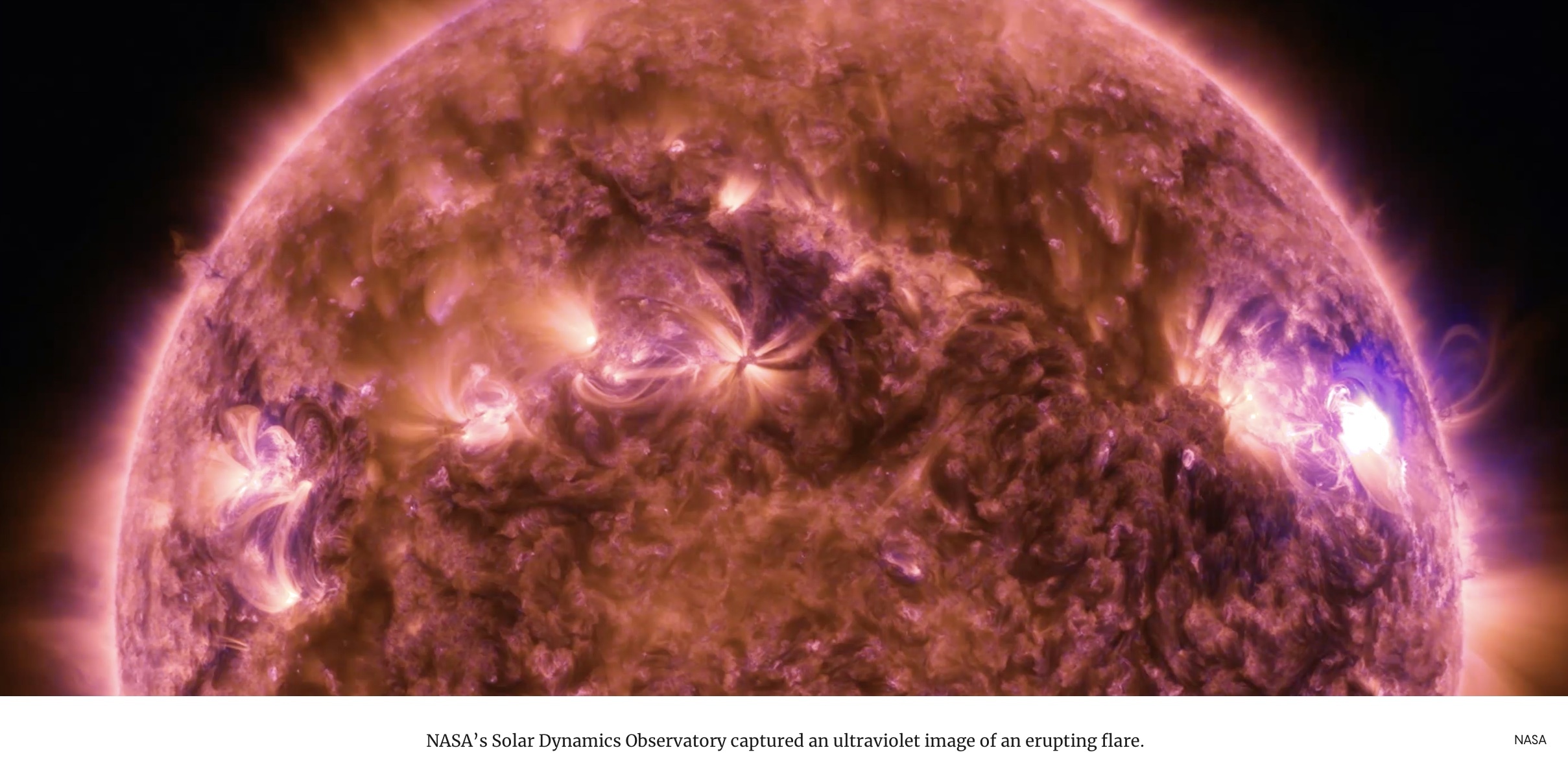1.05.2023
A new analysis argues that ubiquitous eruptions in the sun’s corona explain the vast flow of charged particles seen streaming out through the solar system.

Torrents of charged particles continuously lift off the sun’s atmosphere and radiate outward at millions of kilometers per hour, yielding a solar wind so immense that its limit defines the outer edge of our solar system.
Despite the vast reach of this wind, its formation has long been a puzzle. Now a new analysis argues that the solar wind is powered by a collective set of intermittent, small-scale jetlike eruptions in the sun’s corona, or outer layer. “The idea is similar to how individual clapping sounds in an auditorium become a steady roar as an audience applauds,” said Craig DeForest, a solar physicist at the Southwest Research Institute in Boulder, Colorado, and a co-author of the study.
While scientists already knew that the corona was home to small jetlets that typically last for several minutes, they had previously discovered only a small number of them, mainly at the base of plumes emerging from cooler, less dense regions of the corona known as coronal holes.
The new study reveals that they’re ubiquitous. “Once you know how to find them, you see that they are everywhere in basically every structure in the corona all the time,” said co-author Dan Seaton, a solar physicist who is also at the Southwest Research Institute.
The team found that the jetlets, each between 1,000 and 3,000 kilometers wide, are present even during the solar minimum, the least active phase of the sun’s 11-year cycle — a result that’s consistent with the solar wind’s pervasive nature. “You can randomly pick any day and the jetlets are there, just like the solar wind,” said Nour Raouafi, a solar physicist at the Johns Hopkins University Applied Physics Laboratory and lead author of the study.
In the paper laying out the new findings, published last month in the Astrophysical Journal, the team provides evidence that the jetlets are sparked by a process called magnetic reconnection, which heats and accelerates a plasma of charged particles. The researchers suggest that the jetlets then produce waves that heat the corona and enable the plasma to escape the sun’s gravity and coalesce to form the solar wind.
“The numbers come out looking promising and show it is really quite possible that jetlets could supply the mass lost by the sun to the solar wind,” said Charles Kankelborg, a solar physicist at Montana State University who was not involved with the study.
The Engine
The idea that small-scale, intermittent events could collectively drive the solar wind stems from the work of Eugene Parker, a pioneering solar physicist who died last year. In 1988, he suggested that a “swarm of nanoflares” driven by tiny bursts of magnetic reconnection could heat the corona enough to power the wind.

The astrophotographers Andrew McCarthy and Jason Guenzel created this image out of over 90,000 individual photographs taken through a custom-modified solar telescope.
Introduction
However, finding evidence of this small-scale reconnection has proved to be elusive due to the low resolution of magnetic measurements.
For the new study, the researchers examined high-resolution images from a variety of sources, including NASA’s Solar Dynamics Observatory, the GOES-R satellites — best known as weather satellites — and the Goode Solar Telescope at the Big Bear Solar Observatory. They found that coronal regions that previously appeared devoid of magnetic flux were in fact filled with complex magnetic fields. The team was also able to link several jetlets to specific reconnection events. The researchers expect that even finer-scale magnetic field data could reveal higher reconnection and jetting rates.
The team went on to suggest that the jetlets create a specific kind of wave, called Alfvén waves, that heat the corona. Alfvén waves had been thought of as a competing mechanism that might explain the solar wind. But there is a growing view that these processes can work together. “The global presence of these reconnection-driven jetlets provides a natural explanation for both reconnection and Alfvén waves powering the solar wind,” said Judith Karpen, a solar physicist at NASA’s Goddard Space Flight Center.
Researchers anticipate that upcoming efforts will reveal coronal processes in unprecedented detail. Their hope lies in newer telescopes, such as the Daniel K. Inouye Solar Telescope at the National Solar Observatory, as well as the Solar Orbiter, a joint project of NASA and the European Space Agency that launched in 2020.
“It could turn out that the spectrum of jetting goes from relatively large events ending with Parker’s nanoflares on the smallest scales,” said Raouafi.
And jetlets could be involved with the large-scale events at the sun, such as flares and coronal mass ejections, said Jie Zhang, a solar physicist at George Mason University. “Small-scale eruptions may play a role in transforming magnetic configurations into more coherent large-scale structures that can store large amounts of energy prior to erupting,” he said.
For now, the new jetlet findings have validated the legacy of Parker and his contemporaries. “Here are some observations 30 years later saying they were probably right,” said Kankelborg.
Quelle: The Quanta Newsletter

